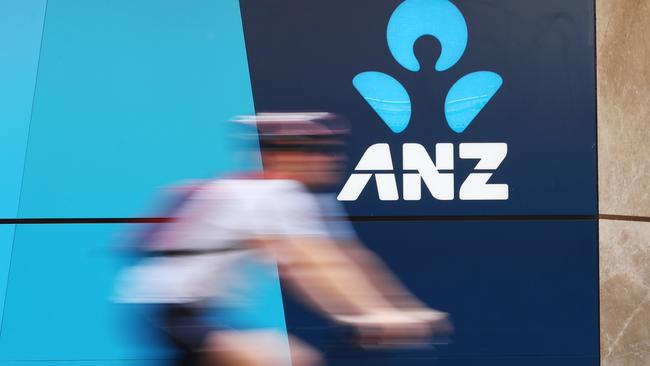Shayne Elliott trying to clear the road to ANZ rehabilitation

Like Andrew Thorburn’s experience at National Australia Bank, Shayne Elliott is finding that the going gets tough once the applause starts to fade from a successful program of asset sales.
The regulatory environment is hostile, competition in the mortgage market is intense, and growth is elusive.
So, for all the good news coming out of ANZ’s institutional division — and who would have thought any time over the past five years that the troubled business would come to the rescue of an ANZ profit result — the truth is that Australia has put in a stinker.
It’s not all Elliott’s doing; certainly the market hasn’t helped.
Home loan applications to the major banks, including ANZ, are down 20 per cent, most of it in the sparse investor segment.
Competition from offshore banks like HSBC and ING has also lifted several notches, and regulators have switched their blackout lenses for magnifying glasses, probing the slightest hint of inappropriate market behaviour.
However, Elliott and his management team have made some bad calls.
The ANZ chief admitted that credit standards in home lending were tightened too far, partly due to a stricter interpretation of responsible lending laws, and partly in response to ANZ’s assessment of the risk-and-reward equation.
Elliott said he did not regret either because it was the right thing to do, but implementation should have been more thoughtful and balanced instead of putting unreasonable stress on the bank’s processes, people and customers.
After three decades of stable growth, the industry was humming like a production line.
While it was an efficient process that delivered high returns, it broke down badly for some customers, as the Hayne royal commission found.
The wash-up for the March half-year was that interest income for the Australia division from continuing businesses fell 5 per cent compared to a year ago, or 1 per cent compared to the September half.
If there’s any upside from a bad judgment call, it’s that the fix shouldn’t be all that difficult.
Elliott was never about to turn the credit taps back to maximum throttle by writing loans at 95 per cent of a property’s valuation.
Instead, he told Four Pillars, 50 more loan assessors had been hired to smooth the flow of applications, now that a higher proportion require manual intervention to verify income and expenses.
“We’re going to get some balance back,” he said. “I don’t think we’re back to growing market share; it will take some time — several months — to have an impact.”
In the meantime, there are some early signs of trouble in the bank’s $270 billion housing portfolio. This should be no great surprise when prices are falling at an average rate of 1 per cent a month in an environment where wages growth is stagnant. Even so, mortgage repayments due for more than 30 days rose sharply from 1.8 per cent of the portfolio in September to about 2.25 per cent.
A slide in ANZ’s presentation pack also showed that 5 per cent of the portfolio had negative equity.
Noting the Reserve Bank reported that 3 per cent of the nation’s housing loans were in negative equity, Morgan Stanley predicted that figure could rise to 7.5 per cent if prices were to fall by a further 10 per cent.
Negative equity are scary words in any market, let along the most important one for Australian households.
However, once offset balances were included, 15 per cent of the affected loans returned to positive equity. The mining states of Western Australia, Queensland and the Northern Territory were most deeply in the red, accounting for 57 per cent of negative-equity mortgages. The same percentage of borrowers with negative equity were ahead in their repayments.
Elliott and his management team have a challenge ahead of them in Australia.
More broadly, though, the kind of ANZ that Elliott wanted to build when he started as CEO three years ago is starting to emerge.
Over that period, he’s flogged 23 businesses and slashed $50bn from the institutional division’s risk-weighted assets, enabling it to resume growth in a much more disciplined way.
About 86 per cent of the institutional book is investment-grade, which makes it less vulnerable to more volatile business cycles.
De-risking and asset sales have freed up $12bn in capital, which has been invested in targeted growth, rebalanced the portfolio, and built the capacity to launch share buybacks worth $3bn.
As a result, earnings per share lifted by 5 per cent and return on equity increased to 12 per cent.
Importantly, institutional ROE reached almost 11 per cent for the half. The sceptics had a ball a few years ago when Elliott set a double-digit ROE target.
While Asia remains a drag on divisional returns, the ANZ boss highlighted that it was a “significant factor” in the overall ROE improvement. “What a turnaround!” he exulted.
With annual expenses now running at about $8.6bn, Elliott drew a line in the sand yesterday, saying the bank could drive that figure to below $8bn by 2022 after five successive halves of falling costs.
The question is whether the market will tolerate such an ambitious program if it believes there’s a link to the bank’s poor revenue performance.
gluyasr@theaustralian.com.au
Twitter: @Gluyasr


